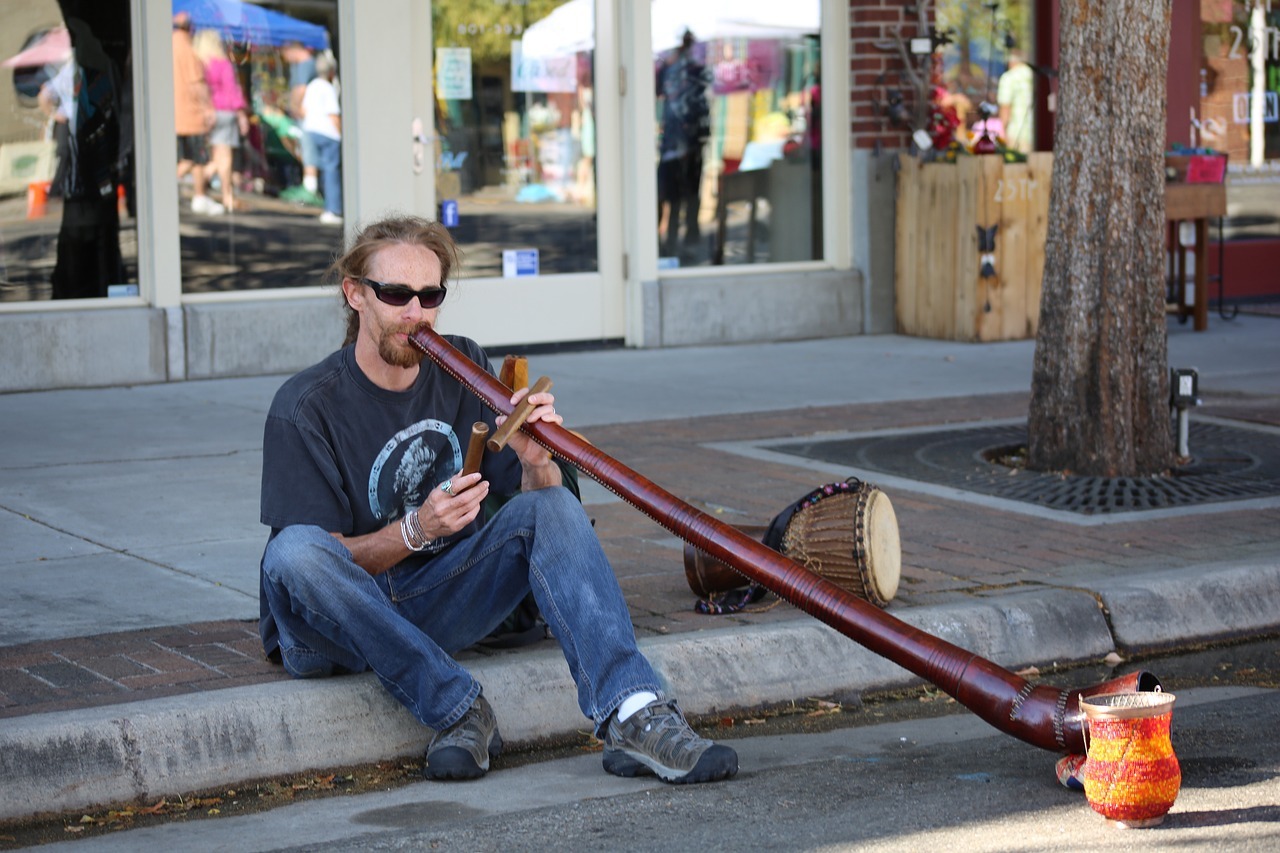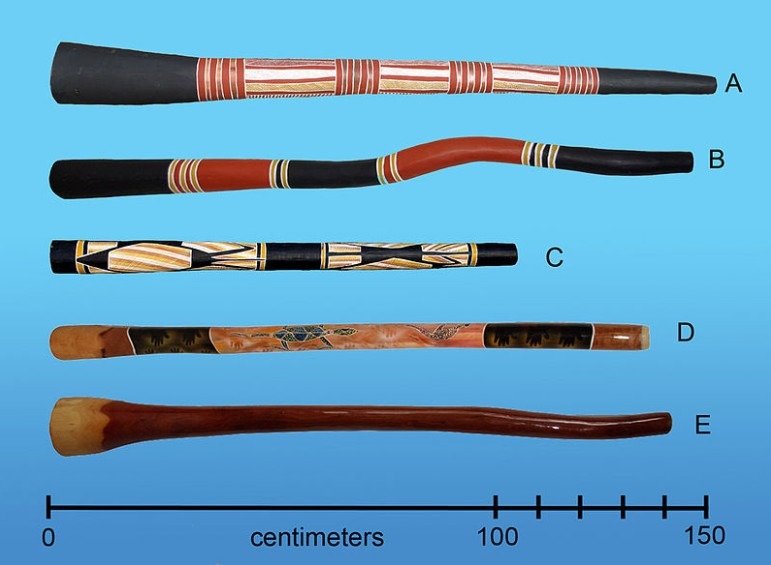A didgeridoo is a wind instrument that is used by the Aboriginal people of northern Australia. This instrument that is usually made out of wood is also considered as one of the notable Aboriginal instruments. Its shape and size are generally conical or cylindrical with about three to ten feet long, but mostly, didgeridoos are four feet long. Typically, its upper size measure three centimeters in diameter. The measurement from there, down to its bell, is about five to twenty centimeters. It is also important to note that the longer it is, the lower its key or its pitch will be.
The pitch note of this instrument varies depending on the key the drone plays in, which can be measured by a tuner. However, most of the didgeridoos have the key range of A, A#, and B for its lower key range, C, C#, D, D#, and E for its middle keys, and F, F#, G, G# for its higher keys. Lower keys such as the A’s and B’s are usually good for slower, atmospheric, and meditative playing. Meanwhile, the middle keys that include the C’s, D’s, and E’s are the easiest to play among the keys. On the other hand, the higher keys, like the Fs and Gs, are more suited to fast rhythmic and percussive styles of playing.
Traditionally, the didgeridoo is played in ceremonial rituals as a rhythmic instrument to accompany singing and dancing. Outside of ceremony in northern Australia, it is also played for entertainment and recreational purposes. It is also considered Australia’s national Aboriginal instrument. Aside from Australia, the didgeridoo had also found its way outside its traditional heartland. In fact, it was reproduced outside and is made out of different timbers and materials like leather and PVC, instead of the original wooden material. Traditionally, didgeridoos are made out of eucalyptus hardwoods that are found in northern and central Australia. Modern didgeridoos were now made of glass, clay, fiberglass, or metal.
Moreover, its design innovations that have started in the 20th century had sparked and can be seen nowadays. Digeridoos can be painted using modern paints, but others prefer to retain its natural wood grain design. Sometimes it varies between minimal to no design at all.
Although the origin of its name is quite unclear, theories stated that it is a western onomatopoeia that mimics the sound of the instrument. Another theory suggests that its name comes from the Gaelic word that means ‘black trumpeter.’ In addition, its name is spelled ‘didgeridoo,’ but the Australian government had formally accepted ‘Didjeridu’ as its correct spelling. However, these two were used interchangeably. Furthermore, less common spelling variations of these instruments have also emerged. Some of these were didjeridoo, digeridoo, didge, and yidaki.
Most often, it is stated that the didgeridoo is about 40 000 years old. However, it has not been tested, and the available information most likely says that this is untrue. According to archeological records, there are nopetrified wooden didgeridoos. They were excavated during radiocarbon dating. However, it is stated that the aboriginal people of northern Australia have used the didgeridoo for no more than 1,500 to 2000 years.
When it comes to playing styles, musicians nowadays have found several techniques and rhythmic structures in playing this instrument. But usually, the circular breathing technique is used. It is played through continuous vibration of lips in order to produce the drone. Using this technique, a skilled player will be able to circulate the air in their lungs. With practice, they can even sustain notes for as long as they desire. In fact, the longest existing record of playing the didgeridoo was for about fifty minutes of continuous playing. This record was achieved by Mark Atkins, an Australian Aboriginal musician, on the 1994 Didgeridoo Concerto.
Modern performances using this wind instrument include combining it together with beatboxing. Also, it became a role-playing musical instrument that was used in the avant-garde music scene. It was also featured on the British children’s TV series called Blue Peter. Aside from that, it was used by industrial bands like Test Dept. Usually, it was also associated with Ethnic and Extreme Metal music. Because of the relaxing feeling, it gives to the player, many of them find immense joy in playing the didgeridoo.


